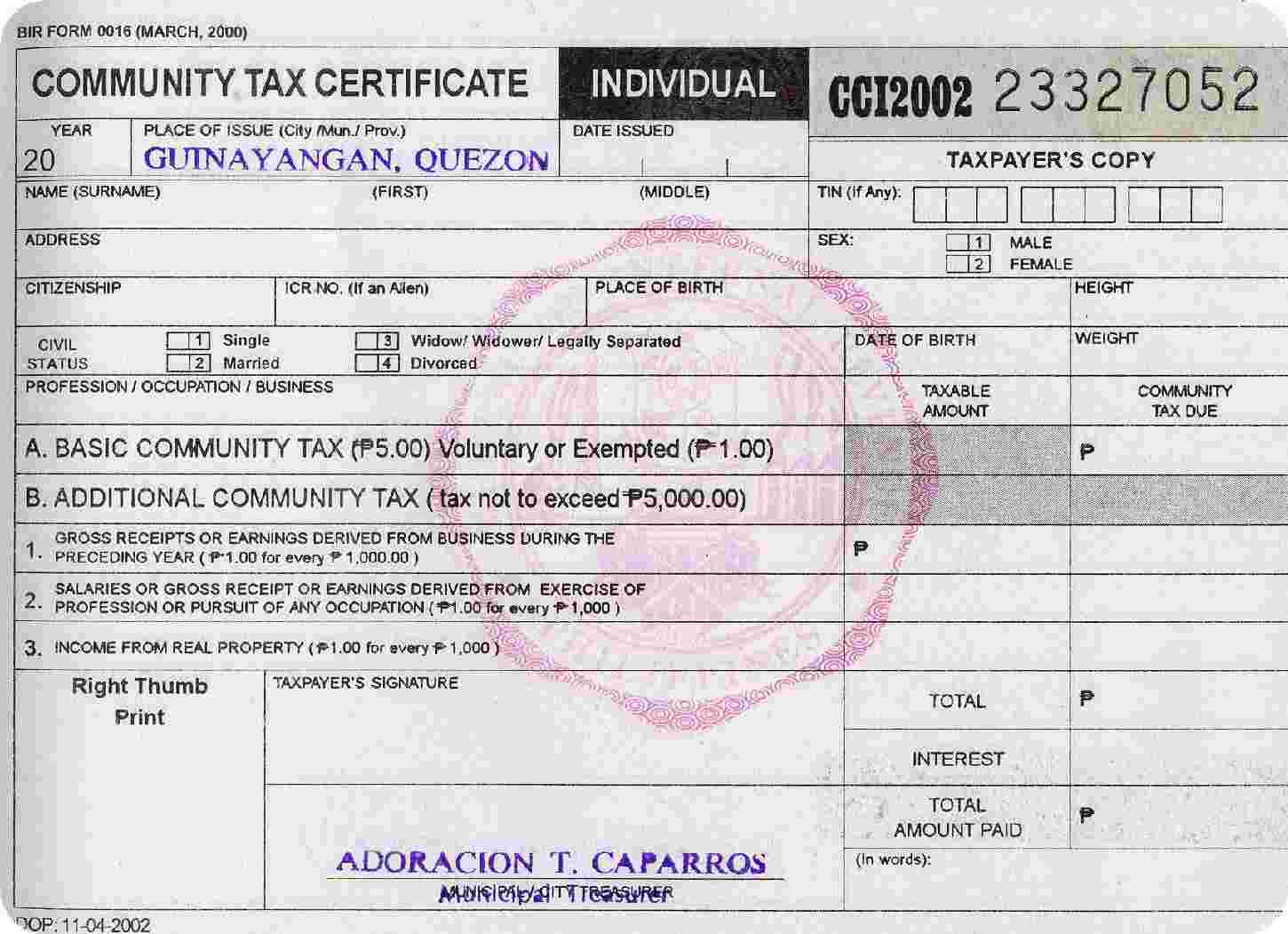The removal of the cedula is one of the key features of House Bill No. 8455; or more commonly referred to as the “Clean and Efficient Government Act 2020.”

This is aimed at simplifying outdated government procedures, as well as removing unnecessary government requirements that can just be a headache for us.
As part of the drive to restructure government services, Albay Rep. Salceda filed this bill. What this bill is, is it seeks the removal of cedula or community tax certificates for government transactions.
Read: The P5,000 Commemorative Lapu-Lapu Banknote
Under the bill of Salceda, the cedula shall be excluded as proof of residence or identify required for all processes of the national government, and as a prerequisite in business participation.
The cedula has become obsolete for almost all intents and purposes, It’s time we phase it out, as it adds nearly an entire day to most government transactions that require it.”
What is a Cedula?
It’s a piece of document we have adapted from our Spanish ancestors and its purpose is to record community tax.
The reason why it’s needed is because it’s a form of “proof” that an individual or a business has paid for community tax.
Also Read: Filipinos are Now Eligible for US H-2B Visas Again
As per Salceda, when the use of government identification cards was not yet widespread, the cedula was set up and required.
That is not the case anymore. “Punitin na natin and cedula”, as a government requirement.
Salceda pointed out that the cedula will be made redundant as proof of identity and residency, especially once the National ID system is rolled forth.
The cedula has been found to be an inadequate form of identification and an ineffective tool for local government collection, and is hence redundant in most occasions.”
What other amendments are included in this bill?
Salceda’s Bill is Also Calling For Other Amendments, Such As:
- Portability of services that are socially invested;
- Electronic signature identification in most transactions;
- Expanded staff capability for highly technical transactions, where applicable;
- Nationa ID for businesses;
- Online taxpayer account for filing and payment of almost all non-large taxpayer taxes;
- To allow Filipinos to settle charges and fees remotely;
- Online payment system for all required government payments;
- Fully online service and electronic TIN application for wage earners and small taxpayers;
- Single-registration for mandatory contribution such as Pag-IBIG, SSS, and PhilHealth to reduce the need for redundant transactions;
- Single-patients, a single-record framework for reducing hospital administrative burden and reducing patient waiting time in PhilHealth claims until care and preventing fraud; and
- Single-contact, one-day business registration system that allows companies that do not pose a danger to the common good to do business immediately upon registration.
Read Related: Taxes Can Now be Paid Online Using PESOnet
Earlier, President Rodrigo Duterte signed a bill authorizing him to speed up and streamline regulatory procedures and processes for new and existing applications and renewals, in times of national emergency, of national and local permits such as the following:
- Clearances;
- Licenses;
- Certifications; and
- Authorizations
History of The Cedula in The Philippines
In 1896, it was the month of August. in defiance of the Spanis colonial rule, Katipuneros congregated in a small neighborhood not far from Manila.
Andres Bonifacio, the supreme leader of the Katipunan asked to present their cedulas, raise them up, and tear them into pieces. The loud cry “Mabuhay ang kalayaan!,” they shouted, as the Katipuneors tore and smashed their cedulas.
Read: Duterte to Gov’t Offices: Simplify or I Will K!ll You
During the Spanish colonial era in the Philippines, the cedula personal was a mandatory identification card.
This ID card was used when deciding and assessing those subject to “prestacion personal” or forced labor when tribute was measured. It also acted as a certificate for residence tax and as a passport.
It was used by the Spanish authorities to limit the mobility of citizens and so that the Guardia Civil could arrest and detain those who were unable to show their cedulas.
Rebellion and Freedom
A sign of rebellion and of freeing themselves and their country from colonialism was the act of the Katipuneros in dismantling their cedulas. it was a call to launch an armed struggle against the dictatorship of Spain.
We know that it functions as a residence certificate, as a legal identification document, and as a group tax certificate. Together with a passport and a driver’s license, it is considered a primary means of identification.
Also Read: Diokno Shows a Sample of the National ID Card, They Plan on Printing 154K Cards Per Day
But, over the past years, it has changed. The cedula has been merely a requirement for government transactions.
More so, the removal of the cedula, if approved, will be a sigh of relief for all of us.
Do you think that the removal of the cedula is a positive thing for many Filipinos? Or is it just something inadequate to help everyone out?
Source: The Philippine Daily Inquirer
